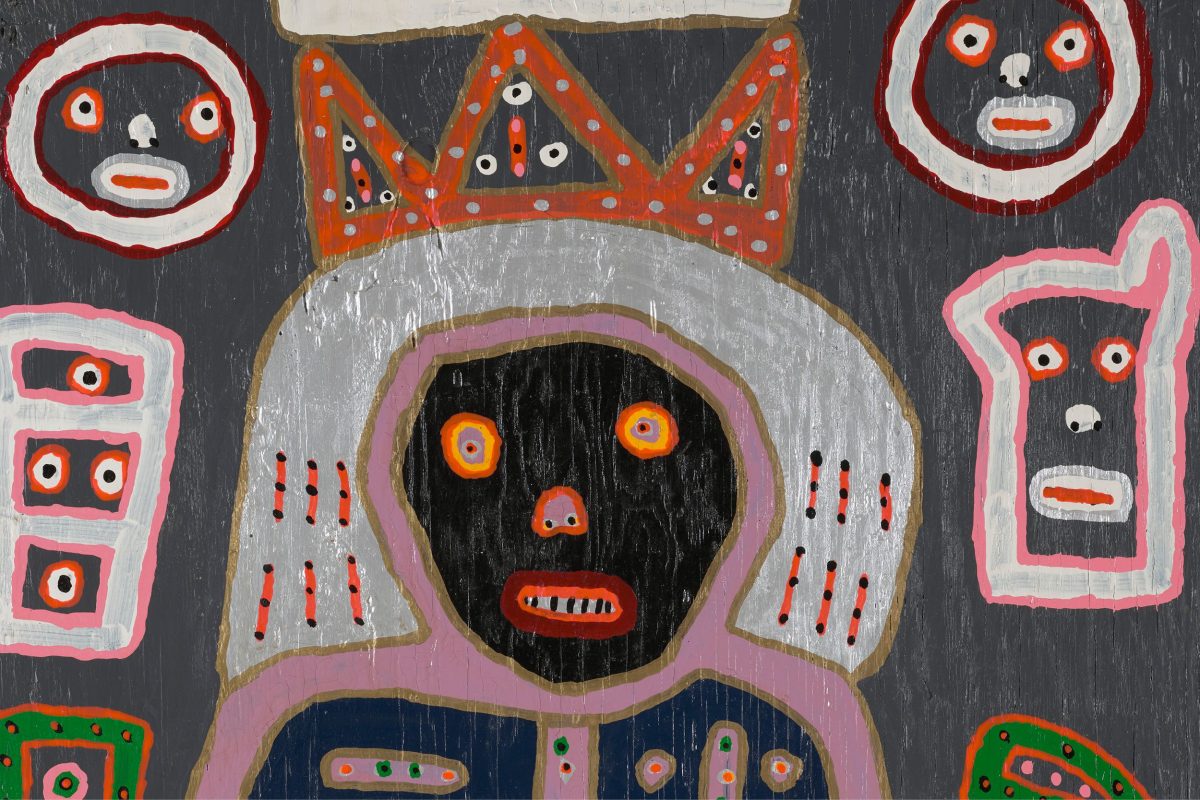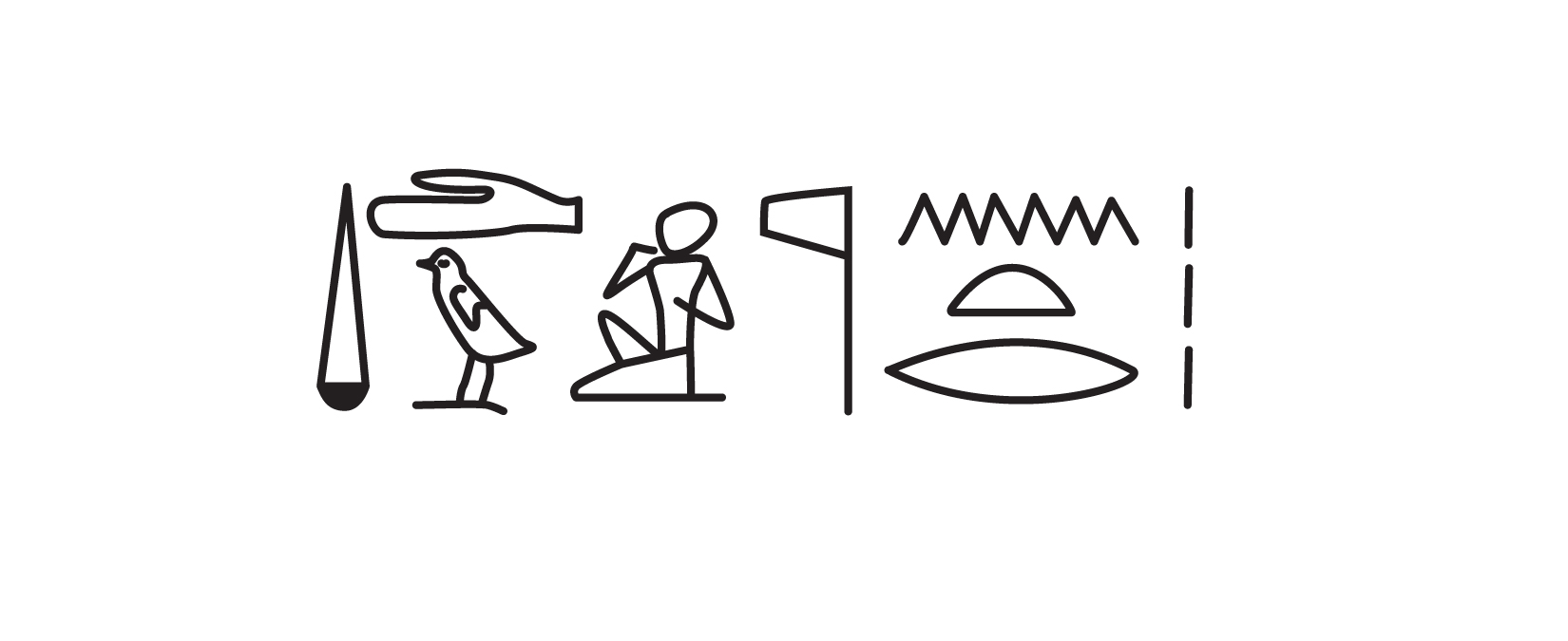
The Enduring Soul
October 26, 2019 - April 4, 2021
Gallery 375
Free Exhibition
A collaboration of Mia and the Cultural Wellness Center, “The Enduring Soul” presents artwork by African and African American artists that honors the connection between ancestors and the living, and between what is seen and the invisible. The artworks on view hold historical, personal, and community memory.
Mia and the Cultural Wellness Center work to co-create methods for each organization to transform mainstream institutions. This includes widening interpretations of art, sharing authority, decolonizing collections in museums, and museum staff working in collaboration with cultural elders and subject experts. This partnership advances the work of both organizations as they work to establish museums as sites for social action.

“The Enduring Soul.” Saturday, October 26, 2019–Sunday, July 12, 2020. Gallery 375, Modern and Contemporary Galleries, Minneapolis Institute of Art. Organized by the Cultural Wellness Center and the Minneapolis Institute of Art.
A Welcome from the Cultural Wellness Center
We welcome you with the greetings of the Ancestors.

Be at Peace. Be at Rest. Be Free.
Africa and the Knowledge of the Ancestors: Spirituality Symbol Mythos Harmonium
At the Cultural Wellness Center, we stress the capacity of Africans to produce knowledge, to have authority over knowledge, and to place significant pressure on dominant societies, institutions, and communities to accurately credit the source and impact of this knowledge.
To our Ancestors, the Metu Neturu
 is a unique form of symbolic writing and thinking. Symbolic thinking reflects and illustrates the dynamic process of divine thought. Each sign is a symbol that reveals its true meaning only to initiated readers by means of a divinely inspired process.
is a unique form of symbolic writing and thinking. Symbolic thinking reflects and illustrates the dynamic process of divine thought. Each sign is a symbol that reveals its true meaning only to initiated readers by means of a divinely inspired process.
After 500 years, the African is returning to our original ways of knowing and being in creation.

Your experience in this gallery is a result of a collaboration between Mia and the Cultural Wellness Center. The perspective labels were authored by Cultural Wellness Center faculty: Seba Ahmad Azzahir, Elder Atum Azzahir, Sister SandjockLikinè, Elder Semerit Seankh-Ka, Brother Kemii Aptezzi, and Brother Minkara Tezet.
Highlighted Works

Leonardo Benzant, American, born 1972, Radiations of the Midnight Walker, Victorious in Round Number 8, He Who Moves Inside of the Womb of Magik and Timelessness, He Who Moves Here, There, and Everywhere Chanting: I AM THE GREATEST! And Chanting: WITCHCRAFT WILL NEVER TOUCH ME!, 2016, mixed medium. Private collection; promised gift on long-term loan to Mia L2019.164.1
Long tubular structures, like tentacles,
Larger than life,
Speak of what is required for the African
To emerge victorious
No matter how many rounds it takes.It starts with long strands of multicolored Czech glass beads, wrapped around handstitched appendages crafted from bundled fabric, bits of soil, plant life, rum, bone, or even saliva.The artist says, “There is a prayer inside each of these forms, a prayer, coins, or other things that are symbolic.”Thus, the work delves into the collective unconscious, encodes and remembers African cultural memory, and offers it as an invitation to healing.Moving us outside of time
Connecting us through strands of DNA,
Quite literally, to the Ancestors—their knowledge-spirituality
Their stature, their power.

Yoruba, Nigeria or Benin, Africa, Egungun ceremonial outfit, 1930–50, cotton, velvet, silk, felt, synthetic fibers, wool, aluminum, wood, buttons, yarn, plastic, string. The Simmons Family Endowment for Textiles and gift of funds from Jim Harris 2011.31


Kalabari, Nigeria, Africa, Funerary screen, 19th century, wood, raffia, pigment. The John R. Van Derlip Fund 74.22.Among the Kalabari people, Warriors Wives carved a funerary screen, like this one, to announce the end of their watch and perform the depth of their love to beat the drum of affection for the Drum Chief. On a funerary screen, the Drum Chief sits in an armchair, dressed in a piece of white cloth with an eagle feather attached to the forehead.The Drum Chief usually holds a sword in his left hand and a human skull in his right hand, though those sacred pieces are missing here. Like on this funerary screen, two protective spirits always sit beside the Drum Chief.
Have you heard about The Seating of the Amaryanabo King? It’s a story from the Kelekeibari people, who live along the Niger River Delta. People could not pronounce their name so Kelekeibari commonly became Kalabari.

Richard Burnside, American, 1944, The Ancient King, 1987, paint on wood. The Ethel Morrison Van Derlip Fund and gift of the Souls Grown Deep Foundation from the William S. Arnett Collection 2019.16.9 ©Richard Burnside / Artists Rights Society (ARS), New York
Richard Burnside has painted a very black, very simple face.
A face devoid of any illusion of realism.
A face through which shines the truth of essence.
A face, perhaps, we do not want to meet.
The artist titles his work The Ancient King.
What is the ancient part of us?
Is it present in our life?
Is it King in our life?
The face, as it is painted, is the ancient hieroglyph, Heer.
In Kemet*, the face told the entire story of one’s life.
In Kemet, there is a homonym of the hieroglyph Heer
Which means “the perfected state.”
The ancient King is fulfilled and realized in the face.
In this work, the face is surrounded by simple geometric shapes,
In repetition and patterns of 3s and 4s.
They are the basic building blocks;
The code of life.
* Kemet: Ancient Egypt

Joe Minter, American, born 1943, Voyage in Chains, 2000, mixed media. Private collection; promised gift on long-term loan to Mia L2019.154.2The secret force of a powerful primeval energy within the soul. Voyage in chains connects me to my birth in the Mississippi Delta in 1943: beautiful circular motion of objects used by sharecropping farmers to cultivate the hard rock dry lands in rural Mississippi.I remember my father’s daily motions, rhythms, and expressions of joy at sunrise.I remember my father’s cosmic spirituality and laborious meditation, a sacred tradition of hard work and unceasing effort. My father and ancestors of his generation came to a place of the sounds and rhythms of the souls’ wisdom.The pitchfork, the hoe, the shovel, the irons: a quadruple expression of symbols evoking the core consciousness of man’s soul. A visible manifestation of the hand of man. The will of man connected to the forces in creation. The serpents’ tongue probing the heavens in alignment with the soul of creator in creation.

Renée Stout, American, 1958, Crossroads Marker with Little Hand, Reaching, 2015, metal, glass, wood, pigments, other materials. The Blythe Brenden Endowment for Art Acquisition 2016.2 ©2015 Renée Stout
The blessing at the crossroads
Tradition of Maat
Of reciprocity, balance, truth, and harmony
Sia, our Intelligence of the Heart
The limitless keys to access
These words, I write, are African existence.
From the Ancient King to Voyage in Chains,
Feeling the burnt from the cross
Passing the crosses to listen to
The story of The Seating of the Amaryanabo King.
Stop at the imprint of our DNA spread across the globe
From Haiti to Virginia,
Swimming in the Delta river on the way
To pay respect to Egungun.
These are the stories of our humanity.
The legacy of 1619
From the sign of Kongo
I mark with my little hand
In metal, and in glass
Wood and pigments
We became acquisitions
From water to land and other materials
The Endowment of this Voyage in Chains
I mark with my little hand
In metal, and in glass
Wood and pigments
To heal our souls is to reconnect
From the crossroad
I mark with my little hand
In metal, and in glass
Wood and pigments

Lonnie Holley, American, 1950, Pressure from the Burn, 1995, found wood, fire hose, nails. The Ethel Morrison Van Derlip Fund and gift of the Souls Grown Deep Foundation from the William S. Arnett Collection 2019.16.11 ©Lonnie Holley / Artists Rights Society (ARS), New York
Lonnie Holley takes discarded and wasted materials from our modern human experiences and transforms them into something enlivened with our present lived experience.Holley’s work transforms what would be trash into enduring expressions of the soul. He converts human debris into lessons of purpose and value. “Having to put out a fire inside yourself, no matter how bad the blaze you been in, you got to go on carrying your burden,” Holley states. His work forces the question: What is in your true nature that endures in spite of brutality and horror in this modern life, where everything will eventually become trash, garbage, or debris? The pressure from the internal burn can be unbearable. Yet it is this very pressure that creates the elemental that produces the catalyst for personal and social transformation.

Serge Jolimeau, Haitian, 1952, Crucifix, 1983, sheet metal, pigment. The Christina N. and Swan J. Turnblad Memorial Fund 97.3 ©The artist, artist’s estate, or assigneesInterwoven throughout Haitian history, a tumultuous crossroads plays out between African spirituality and official, socially acceptable, Haitian life. In the small crossroads town of Croix des Bouquets, on the outskirts of the capital city, four generations of men, mechanics or blacksmiths by day, have forged an art form imbued in the Principles of Fire and Metal at the crossroads of Vodun and Christianity. In Crucifix, the personified Principle of the Cross organically looms large and subsumes the iconic figure of Christ dying on the cross.There is a larger reality at play here—four birds bring further organicity while simultaneously depicting spirit’s enduring capacity to cycle through birth, death, and rebirth. Powerfully reclaiming the cross, this work brings to life African spirituality’s crossroads between mundane natural life and the truth of the Invisible.

Mose Tolliver, American, 1921–2006, Cross of a White Jesus with a French Bird, a Mountain Bird, and Pinto Bird, 1987, Paint and masonite on paneling. The Ethel Morrison Van Derlip Fund and gift of the Souls Grown Deep Foundation from the William S. Arnett Collection 2019.16.33 ©Mose Tolliver / Artists Rights Society (ARS), New York
Mose Tolliver painted a cross within a cross.
The images on the outer cross must be looked at symbolically.
The diminutive “white Jesus” bears wings
And is of the same size as the birds in the natural Creation,
Who have been specifically named and identified.
Birds are about the spirit and travel within the inner world.
The inner cross shows an array of dots and lines
Reminiscent of an African transmission.
This coded language is what our spirits need
To fly free like the birds.
There is a sweetness emanating from this cross
With a code rather than a body hanging on it.
This cross invites us to life
Rather than death.
Gallery Installation



“The Enduring Soul,” Saturday, October 26, 2019–Sunday, July 12, 2020. Gallery 375, Modern and Contemporary Galleries, Minneapolis Institute of Art. Organized by the Cultural Wellness Center and the Minneapolis Institute of Art.
